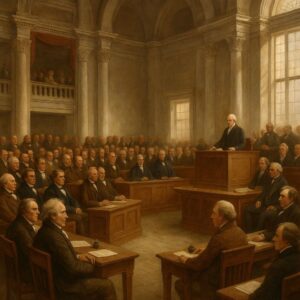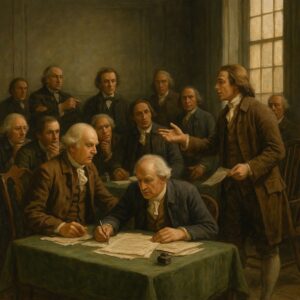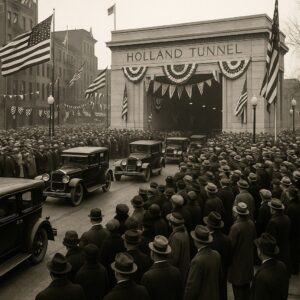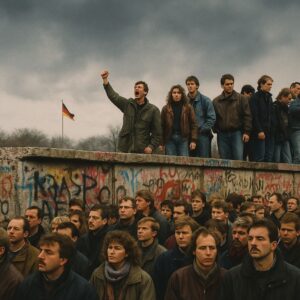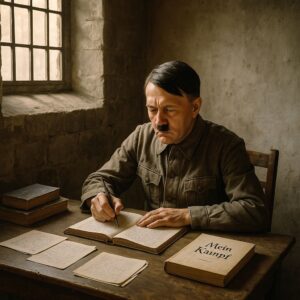The Jonestown Massacre stands as one of the most haunting and emotionally devastating tragedies of the 20th century. More than 900 people—men, women, children, the elderly, entire families, entire futures—lost their lives in a remote commune deep within the jungles of Guyana on November 18, 1978. It is a story so heartbreaking, so staggering in scale, that it defies easy explanation. At its center was a man, Jim Jones, whose rise from charismatic preacher to authoritarian cult leader unfolded over years with eerie subtlety, culminating in the deadliest single loss of American civilian life in a non-natural disaster prior to September 11, 2001. The massacre was not a sudden eruption of violence but the culmination of fear, hope, manipulation, idealism, and despair woven together into a catastrophic human tragedy. To revisit Jonestown is to confront the fragile line between faith and coercion, community and control, trust and terror—and to remember the humanity of the victims who became lost beneath the dark shadow of their leader’s final command.
The origins of Jonestown lie not in a distant jungle, but in the United States, where Jim Jones began his career as a preacher and activist devoted, at least on the surface, to racial equality and social justice. In the 1950s and 60s, Jones built the Peoples Temple as a racially integrated congregation at a time when such inclusivity was radical and often unwelcome. Many early members genuinely believed they had found a spiritual home unlike any other—a place where barriers of class, race, and background dissolved in the conviction that humanity could transcend its divisions. For African Americans facing discrimination, for young idealists yearning for social change, for the elderly seeking community, Jones offered belonging and purpose.
He was intelligent, magnetic, and relentlessly progressive in his public persona. The Peoples Temple engaged in charitable work, supported the poor, and promoted civil rights. Jones’s sermons were fiery and emotional, weaving scripture with political rhetoric and calls for justice. But beneath the veneer of benevolence, darker patterns were already emerging. Jones demanded loyalty. He tested boundaries. He framed criticism as persecution. And he increasingly positioned himself not only as a pastor, but as an indispensable savior.
Those who joined the Peoples Temple rarely saw themselves as entering a cult. They saw a movement, a family, a chance to build a better world. And Jones cultivated this belief with skill, mingling genuine good works with manipulation. He encouraged confessions, blurred personal boundaries, enforced communal living, and gradually detached members from outside influences. Critics saw signs of danger; followers saw signs of devotion.
By the early 1970s, Jones had relocated the Peoples Temple to California, gaining political influence and expanding his organization. Yet scandals multiplied—allegations of abuse, financial exploitation, staged healings, and erratic behavior by Jones himself. Facing mounting scrutiny, Jones sought a place where he could exert total control, free from the media, authorities, and defectors he believed threatened his vision.
He found that place in the jungle of Guyana.
What began as the Jonestown Agricultural Project was marketed as a utopia—a socialist paradise where members could live in equality, free from racism and capitalism. But what emerged was far more complex and ultimately catastrophic. When the first settlers arrived, they found jungle soil difficult to farm, supplies insufficient, and infrastructure rudimentary. Yet there was still hope, still idealism. People built homes, planted crops, and forged friendships. Many truly wanted Jonestown to succeed.
But as Jones arrived, the settlement changed. The tropical heat made his health decline. His paranoia intensified. His reliance on drugs deepened. Loudspeakers carried his voice throughout the settlement day and night, delivering sermons, warnings, and monologues. Armed guards patrolled the perimeter. Passports and medications were confiscated. Letters were censored. Members were subjected to humiliation, forced labor, and “punishment drills” designed to break their will.
For many, leaving Jonestown became impossible—not only logistically, but psychologically. Families feared being separated. Defectors were branded traitors. Jones portrayed the outside world as a hellscape of racism, fascism, and conspiracies waiting to destroy them. Life in Jonestown became a mixture of genuine community and absolute control, of hopeful dreams and crushing despair.
By 1978, concerned relatives and former members pushed U.S. authorities to investigate. Congressman Leo Ryan, known for his willingness to take bold action, decided to travel to Guyana and see the commune for himself. His arrival on November 17 shook Jonestown to its core. For the first time, an external force—a symbol of American authority—had entered the isolated world Jones had created. The visit began amicably but quickly turned chaotic. Defectors approached Ryan’s team pleading for escape. Jones, increasingly unstable, felt his control slipping away.
On November 18, as Ryan and the defectors prepared to return to the airstrip at Port Kaituma, gunmen from Jonestown ambushed them. Ryan and four others were killed. The attack marked the point of no return. Jones, convinced that external forces would now destroy him and his movement, gathered the residents of Jonestown in the main pavilion. What happened next was not sudden, but deeply orchestrated—a ritual Jones had rehearsed in “White Nights,” drills where followers practiced mass suicide to prove their devotion.
That day, it became real.
Jones delivered a speech urging “revolutionary suicide,” insisting that death was preferable to life under oppression. Disoriented by fear, exhaustion, manipulation, and the chaos of the attack, hundreds complied. Mothers gave poison-laced drink to their children. Entire families collapsed together. Some resisted, some were forced, and others felt trapped by the crushing psychological pressure of the moment. By the end, more than 900 people were dead—including over 300 children.
The image of bodies scattered across the pavilion, lying peacefully or clutched together, became one of the most chilling photographs in American history. It symbolized the devastating power of coercion, the fragility of human vulnerability, and the catastrophic consequences of unchecked authoritarianism. Yet behind every figure in that image was a life—rich, complex, hopeful, human. Many victims were idealists who joined the Peoples Temple believing they were building a better world. Their humanity deserves remembrance beyond the horror of their final hours.
The aftermath of Jonestown reverberated across the world. Families mourned loved ones whose deaths were incomprehensible. Governments reexamined how they monitor closed religious groups. Sociologists, psychologists, and theologians debated how otherwise ordinary people could be drawn into such a situation. And media coverage often sensationalized the tragedy, overshadowing the deeper systemic failures and the emotional realities of the victims.
Jonestown became a cautionary symbol—an example invoked in any discussion of cults, coercion, or blind obedience. Yet such simplifications risk losing the nuance of how the tragedy unfolded. The people of Jonestown were not foolish or weak. They were human beings who sought belonging, justice, equality, and purpose. They were vulnerable to manipulation because they believed in something better. Jones preyed on that belief.
Understanding Jonestown requires empathy—not for its leader, but for its victims. Their story illustrates how hope can be weaponized, how fear can bind people, and how charismatic authority can warp even the noblest intentions. It is a reminder that the line between empowerment and exploitation is thin, and that communities built on love can be twisted into instruments of control when trust is abused.
More than four decades later, Jonestown remains an emotional wound—a tragedy that defies easy categorization. It is a story of idealism corrupted, of leadership gone grotesquely wrong, of families destroyed, of systems that failed to intervene in time. But it is also a story about the resilience of survivors, the courage of defectors who tried to warn the world, and the importance of vigilance in the face of manipulation.
The victims of Jonestown deserve to be remembered not solely for how they died, but for how they lived—their hopes, their dreams, their belief that a more just world was possible. Their tragedy teaches us not to mock, but to understand. Not to simplify, but to reflect. Not to forget, but to honor.
Jonestown is a warning, a lesson, and a memorial all at once. And though the final hours were filled with fear, the lives lost deserve to be remembered with dignity, humanity, and compassion. Their story is part of our shared history—a reminder of both the power of community and the dangers that arise when trust becomes ensnared in authoritarian control.
It is a tragedy that shook a nation and reshaped how society understands the vulnerability of the human heart. The Jonestown Massacre was not just an event—it was a reckoning with the darkest possibilities of misguided devotion, and a call to guard against the forces that exploit hope for destructive ends. It remains, to this day, one of the most painful chapters in modern history—but one that must be confronted, remembered, and learned from so that its lessons endure long beyond its sorrow.


